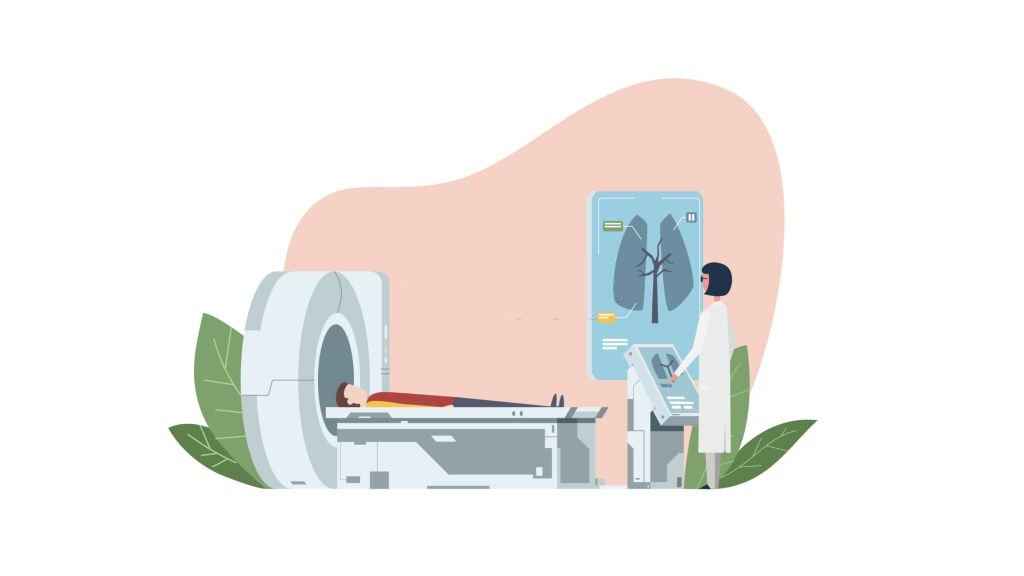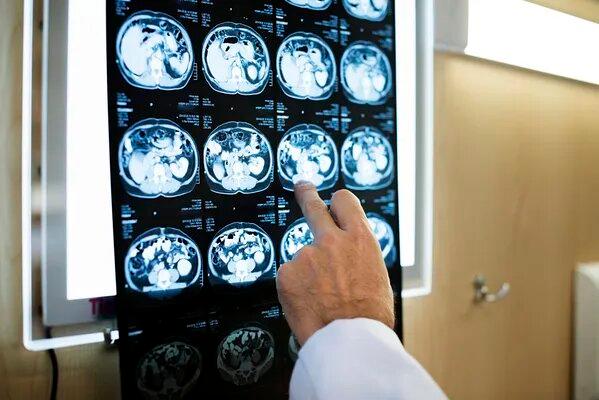CT Scan Explained: Understanding the Full Form, Types, Benefits, and More

Medically Reviewed By
Dr. Ragiinii Sharma
Written By Dr Divya Rohra
on Feb 24, 2022
Last Edit Made By Dr Divya Rohra
on Feb 26, 2025

We understand that big machines and complicated tests can create panic. If your doctor has advised one for you or you want to understand the what and how of the scan, we got you covered.
CT Scan or Computerised Tomography Scan, is a commonly used diagnostic intervention to visualises of and hard tissues of the body. This is a radiological imaging technique conducted by niche radiological experts which offers a combination of a series of X-ray images of the body which is further processed by the computer aided tools to create cross-sectional images of bones and soft tissues in the body. It is a very comprehensive evaluation which helps the healthcare professionals diagnose the disease accurately.
The physicians use it most commonly for cancer screening, staging, and follow-up. The use of CT scans is also popular to aid in performing biopsies and to assist during a surgical procedure.
Types of CT Scan
- High-resolution CT scan: This type has more resolution and provides a great level of accuracy in imaging. Mostly used in lung disease diagnosis.
- Helical or spiral CT scan: This type of scan is suggested for heart and heart related disease diagnosis. In this type of scan, the X-ray beam encircles and provides detailed images from various angles. Calcium build up insides the coronary arteries can be estimated using this scan.
- Ultrafast CT scan (electron beam CT scan): This type of CT scan which produces fast moving images, helps in visualising in the form of a "movie". This helps in studying the heart chambers and valves. This scan is also used to examine the heart condition. This is the most widely used scanning.
- Computed Tomographic Angiography scan (commonly known as CTA scan): Angiography which is also technically referred to as arteriography provides detailed images of the blood vessels.
- Combined positron emission tomography and CT (PET/CT scan): This is a combination of CT and positron emission tomography technologies and is commonly known as PET/CT. This combined technology gives an elaborate anatomy and also determines cell function and metabolism which is a very instrumental tool for diagnosis and treatment for cancer. This coupled technology is also used to examine conditions such as epilepsy.
Points to remember before you are considering a CT scan
Exposure to Radiation
A CT scan is similar to X-ray, wherein the patient is exposed to harmful ionizing radiation. But the amount of radiation is much more than exposure to basic X-ray because the CT takes numerous detailed images to provide clear insights. Various studies have depicted that even very low doses of ionising radiation used in CT scans resulted in long-term effects, and exposure to higher doses can significantly increase the potential risk of cancer.
These potential drawbacks of CT scans are overlooked as there are factors that can prove to be beneficial for timely treating the diseases. Therefore, the radiologists use the optimum dose of radiation to obtain the detailed reports required for study. Technological advances are also assisting in developing newer CT scan machines that require less amount of radiation.
Pregnant and Breastfeeding Women
The ionising radiation that is used by the CT scan is not proved harmful to the unborn foetus but it is advised to not recommend CT scan for pregnant patients. So the radiologist before conducting the test confirms whether the female patient is pregnant.
In case of breastfeeding mothers, barium which is used for radiation is not postulated to enter the bloodstream and is unlikely to be part of breastmilk. Whereas it is observed that less than 1% of an iodine-based solution can enter breastmilk. This amount is unlikely to cause any harmful effect to the baby. Therefore, radiologists recommend the mothers to avoid breastfeeding for 24 to 48 hours following the CT test.
Considerations in Children
The side effects of CT scan on children are evaluated and various guidelines are prescribed. These guidelines include,
- In case of children CT scans are performed only when there are no other options
- Ultrasound and MRI techniques are more preferred
- The radiation level are optimised based on the child's weight
- The size of the scan area is narrowed
- The scan resolution is also worked upon if high resolution images are not required
Allergies to contrast material
The radiologist would suggest intake of contrast material which is a special dye for better examination of the particular organ or body part. This contrast material refrains the X-rays and produces white images which helps in better visualisation of other parts. The radiologist either injects, gives it orally in form of drug or enema before the CT scan procedure begins. Any adverse reaction to the contrast material is a very rare occurrence but any drug or allergic reactions must be informed to the radiologist. Adverse mild reactions include rash or itchiness. In very rare instances any allergic reaction can be serious and even fatal.
Price in India
There are various CT scans and depending upon the type of machine, contrast material and the organ to be studied the price ranges from 5000 to 15000 INR in India.
Conclusion
The CT scan is a powerful diagnostic tool that enables diagnosing the disease accurately and recommends appropriate treatment. The drawbacks can be overlooked as the benefits outweigh them. This technology has made tremendous advances since inception in the early 1970’s. Numerous advances in technology are also resulting in an increase of reliable image quality and its widespread use in clinical medicine. The historical trends suggest that CT enabled the physicians to provide informed predictions of disease accuracy. High quality resolution with minimum rotation times of almost 200 milliseconds, scan times of upto 80 milliseconds is available in recent machines. The use of iterative reconstruction is increasing widespread as the algorithms involved are becoming more robust.

